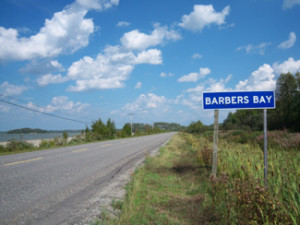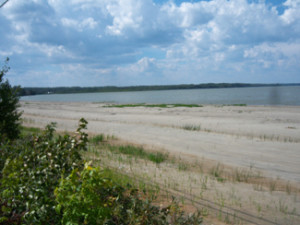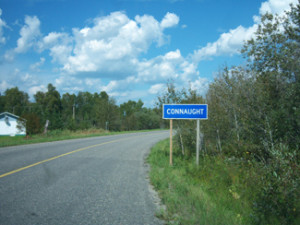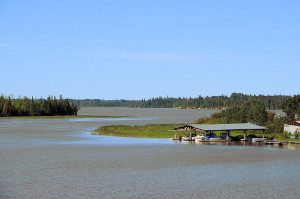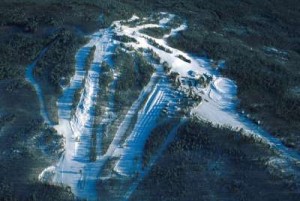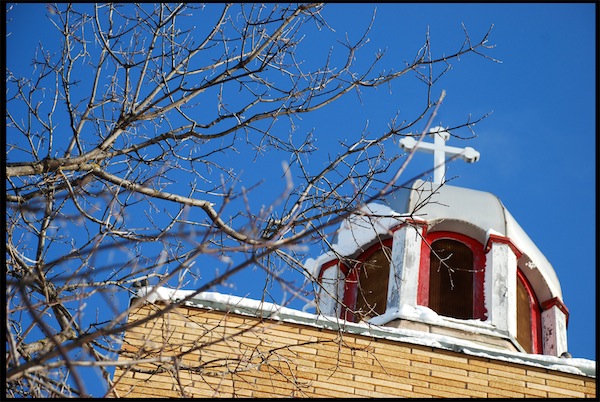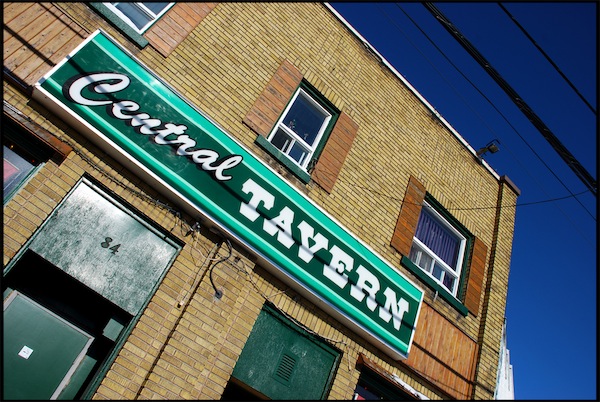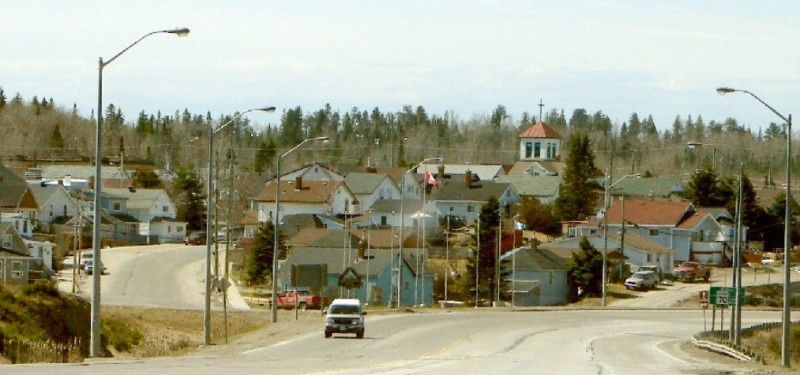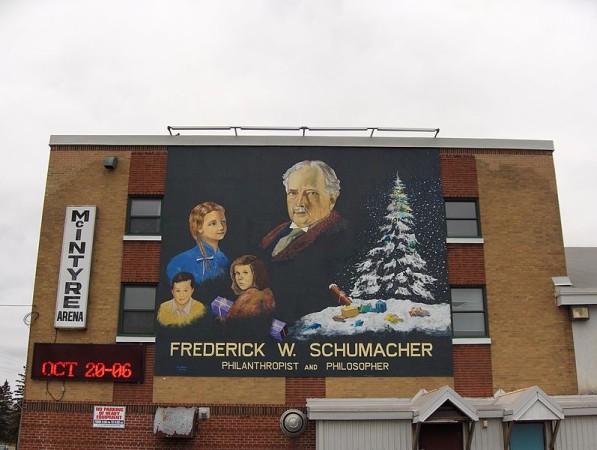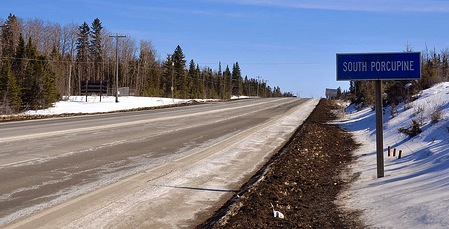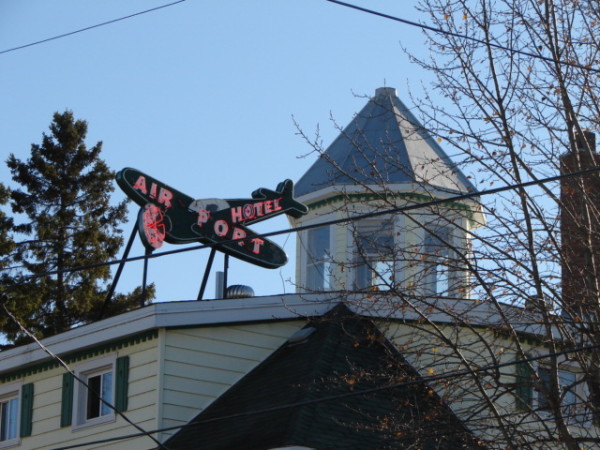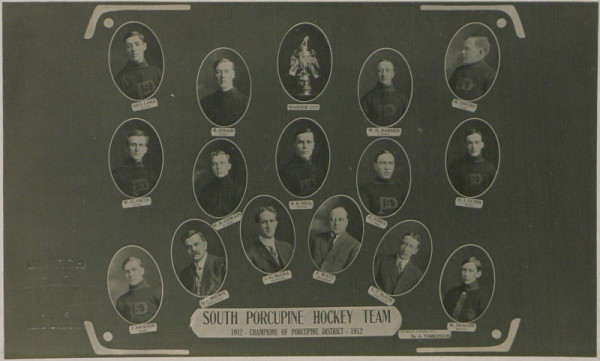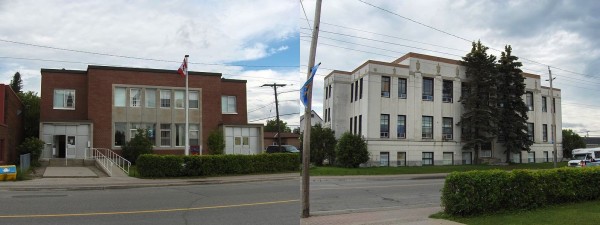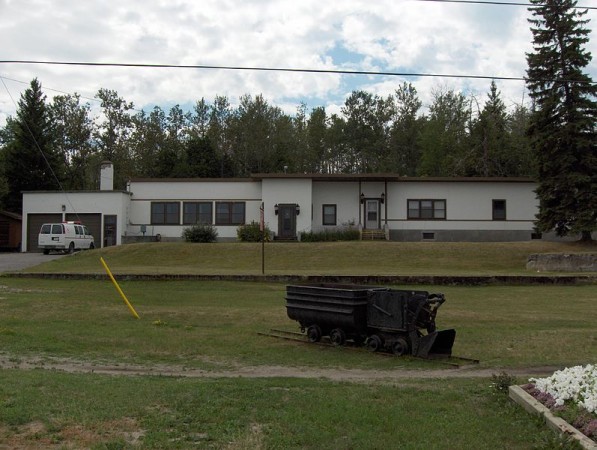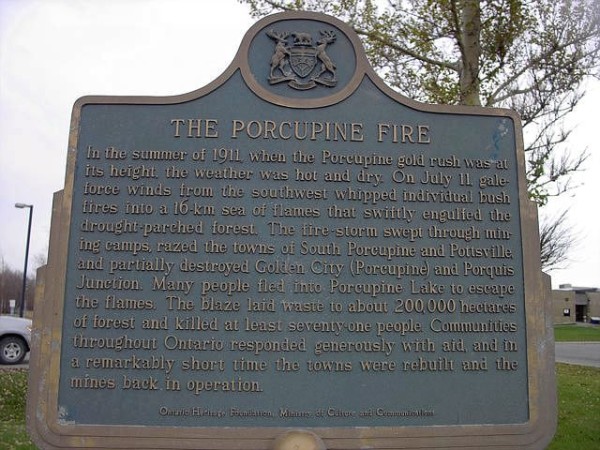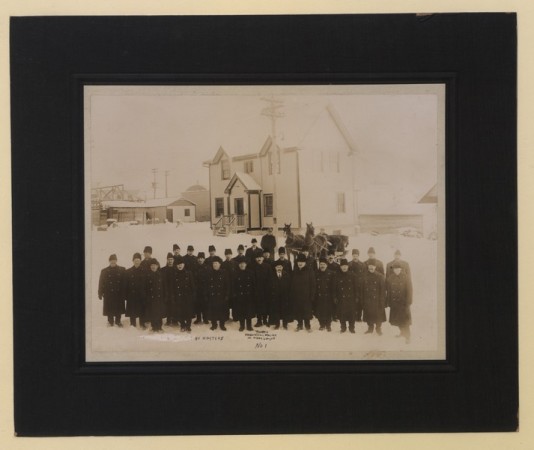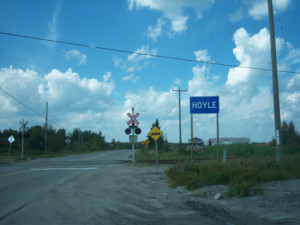It’s weird. The vast majority of my time in northern Ontario was spent in Timmins. Yet Timmins is one of the last places I’ve ended up blogging about.

Timmins, Ontario sunrise, care of Wiki Commons User P199
Maybe Timmins kept falling down the priority list as I focused on towns that are actually on Highway 11 and Yonge Street. Maybe it’s because it’s a little easier to get down your thoughts when they’re relatively limited to the basic impressions of someone passing through town. Maybe it’s because Timmins is closer to my heart than some of the other places I’ve written about, and that I thought I had to do it justice. Or maybe it’s that my observations kept shifting, influenced by the distance of time.
It has been years since I’ve been to Timmins. Six or seven years to be honest. But, writing this, it doesn’t feel that way.
Ontario’s “Real” North
In writing about my travels along Ontario’s Highway 11 and Yonge Street I’ve blogged about ~120 communities, more than half of them being in northern Ontario. So sometimes it’s difficult to avoid playing all hokey-jokey with northern stereotypes. Of course, Timmins has no shortage of these.
So lets get it over with. You know you’re in northern Ontario when…
- …the smell of lumber permeates the air.
- …the major streets are named after trees.
- …there isn’t just one fast food place exclusive to poutine, but two.
- …everyone smells like gasoline from either snowblowing or snowmobiling, but no-one else notices but you.
- …the town’s former claim to fame was being the largest land area of any city in the province.
- …the town’s current claim to fame is having the most bars per capita of any city in the country.
- …the town builds a big tourist attraction around a famous singer that grew up there (Hello, Shania Twain Centre)
- …and then sells that big tourist attraction to a mining company because the ore underneath is worth more than the attraction (So long, Shania Twain Centre).

Hands down the most beautiful woodpile photo on highway11.ca (Credit: Harriet Carlson)
Really, though, it is not about the stereotypes. Though residents of Thunder Bay or Sudbury or wherever would likely disagree, to me Timmins will always be the heart of northern Ontario.
Thunder Bay and areas west tend to gravitate toward Winnipeg. Sault Ste. Marie has its American twin across the river in Michigan. North Bay is too south – that’s why they call it the “near north”. Sudbury is too big – it lets you opt out of northern Ontario, like living in Windsor or St. Catharines minus the Carolinian trees. Kirkland Lake is too out there – a frontier town hanging by the thread of the boom-bust cycles of local mines. Geraldton is too small, too isolated, too anglophone. Hearst and Kapuskasing are too small, too isolated, too francophone.
But this isn’t just some personalized process of elimination. There is something about Timmins that is intangibly reflective of the north as a whole.
Timmins, Ontario: Putting the “other” in mother tongues
I first noticed it standing in line outside in the slush in -17 degree weather at the Tim Hortons on Algonquin (which is way too small for a city this size and this cold) not more than 20 minutes into my time in Timmins.
“Deux cafés – une grande, une extralarge, both two cream une sucre.”
My ears perked, but I quickly slid back into my early morning stupor. A few days later, I heard it again.
« Youse guys veux jumper sur la tramp? »
Right then and there I knew that I was gonna love this place – for two reasons.
I’m the grandson of immigrants to Canada. One set are from Italy and, after 50-plus years here, bits and bobs of English have permeated their Italian. I grew up hearing Italianized words like “chickena” and “carro” and “trucko”, hearing “shitta!” yelled from the basement each time a mason jar is dropped, and, most inexplicably, the couch constantly referred to in both languages as the “chesterfielde”.
But what most prepared me for Timmins was being a product of Ontario’s French Immersion school system. The one thing that every French Immersion kid knows is that though the program aims to make you fluent in two languages, it leaves you master of only one – franglais.

Timmins, Ontario – Mines, mines, everywhere a mine
Whereas most of the northern mines hired either anglophones or francophones, but not both, Noah and Henry Timmins had a francophone mom and hired people of both backgrounds. So, thanks in part to the legacy of the Timmins brothers, just over 50 percent of people in Timmins are raised as anglophones and just over 45 percent as francophones.
That being said, I’m sure that 80 percent grew up in a home where franglais featured prominently.
Mix that in with some of regional quirks of northeastern Ontario French – using pièces instead of dollars, or pronouncing moi et toi more like mmmwhy et ttttwhy – and this franglais leads to some of the best sentences this French Immersion kid has ever heard, such as:
« Le parking? Ca cost cinq pee-ass? J’ai pas le cash. »
or the French conjugation of English verbs, like
« Il snowera demain. »
or the ultimate in franglais, which can apply equally to your used car, your boss’s latest email, or the state of your marriage …
« …c’est fucké. »
There’s more to Timmins than mangled languages
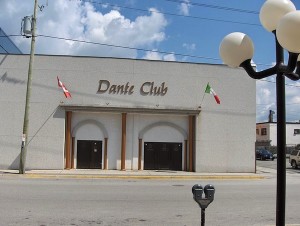 Timmins is deceptively diverse.
Timmins is deceptively diverse.
You see it in the Dante Club, the Croatian Society, the Club La Ronde, the White Eagle Hall, the Obji-Cree Centre, the St. Andrew’s Society, the Chinese Benevolent Association, not to mention churches for everyone from Baptists to Mormons. It’s in the First Nations population. In the businesses like Bucovetsky’s or Feldman Tire. The Persian mechanic who fixed my car after blowing my bushings trying to avoid a crater on Airport Road. The Congolese lecturer I met at the local Université de Hearst campus. The Tamil chef who ran the Italian restaurant that used to be in Timmins Square. The Venezuelan doctor that convinced me that I had not pulled a muscle exercising at Rehab Plus, which is, by the way, probably the only gym where you can run laps in the glow of stained glass – it is located in a re-purposed church.
I was surprised to find that this diversity is supported by stats. Timmins, North Bay and Sault Ste. Marie have visible minority populations that hover around 10 percent. That’s twice as diverse than similarly sized cities in southern Ontario, such as Brantford, Bellevile, Orillia, Welland, Woodstock, Stratford, or the Kawarthas. Timmins is more diverse than Thunder Bay or Sudbury.
I used to always say that multiculturalism – both as a concept and as a policy – foresaw the rise of globalization. But when you learn that the mines were the only places that hired during the Great Depression – drawing immigrants from across the globe – you realize that Timmins, Schumacher, the Porcupine and Kirkland Lake were Canada’s original melting pots. Long-before we fashioned the urban street, beset by storefronts emblazoned with different languages and alphabets became our collective image of multiculturalism, northern Ontario was multicultural Canada.
Like Ontario, Timmins is kind of a mixed bag
At first you see the little things – an empty shelf in the A&P, left bare because the trucks didn’t make it up Highway 11 thanks to a bad storm. Or the sad, wilted produce in the supermarkets during the winter. Or the size of Giant Tiger’s frozen foods section – it practically fed me while I was up in Timmins.
You notice the signs for independent stores and long-standing family businesses, and compare those to the shuttered windows of Harvey’s or Arby’s or some similarly ubiquitous national franchise that, in most southern Ontario towns, only serves to print money. Yet, just outside town, a Wal-Mart has sprung up.
But what’s most visible is the diversity in the neighbourhoods. Most Ontario communities are relatively economically homogenous. If they’re not, they’re usually large-enough to make economic variety seem like different shades of a similar colour.
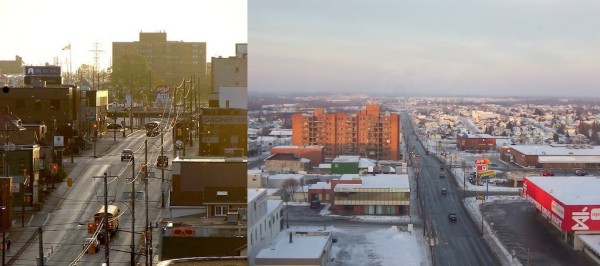
Timmins, Ontario streetscapes – Wiki Commons User P199 on the left, mine on the right. It is OK to like his better.
But towns like Timmins don’t have outer and inner suburbs into which to stash their rich and shunt their marginalized. You might not expect visible signs of homelessness in a town of 45 000. You definitely don’t expect the homeless in Timmins, as a proportion of the population, to be quadruple that of Toronto.
And that’s when you realize that even in a place as sparsely populated as northern Ontario, Timmins functions as a regional refuge for the enormous hinterland, no different than London or Kingston for their surrounding rural areas. In a way, Timmins is a microcosm of a larger urban centre.
Hotels, bars, hotels with bars, bars with hotels, hotels with lounges, lounges with hotels…
For a time, I wanted to write about the hotels. I had stayed in enough of them to learn their quirks.
But what I truly remember best are not the dank bedrooms or non-descript conference facilities. Instead, it is the people.
I remember registering with the Elections Canada official, wishing andhoping andthinking andpraying that I’d be assigned to a voting booth void of any volunteers from other parties.
I had volunteered as a scrutineer for a local election. When you’re from out of town, there are only so many evenings and weekends you can spend with your coworkers. I was desperate for something to do other than bowling. Or eating.
And as luck would have it, I arrived at my poll to find to find it permanently manned by someone representing a rival. And that someone was a much older man, dressed conservatively in slacks and a cardigan, shirt fully buttoned to his adams apple. He raised his head in suspicion from his book, eyes peering at me over semi-circled librarian specs topped by wild, muppet-like eyebrows.
The silence was pretty weird. The age gap made it even weirder. The election atmosphere just made it insufferable. I had to say something. So I asked him about what he was reading.
And then it all changed. Instantly friendly, we talked about our love of non-fiction, his criticisms of Jared Diamond, my skepticism of early North American “discovery” theories, and are mutual interest in popular geography. I soon forgot to report back on my poll. He forgot to report back on his. We were scolded by Elections Canada staff for talking. Two or three hours slipped by, with no thought to the fact that we represented candidates whose values, policies and priorities couldn’t have more opposite. And when I arrived home, three months later, there was a book waiting for me in the mail – with numerous clippings and photocopies of similar articles. I still regret not writing him back.
Northern Ontario hotels – always looking for ways to add value
Driving up to Timmins for the first time on my own, I stopped just outside Kirkland Lake. Having underestimated my travel time, I was going to get into Timmins very, very late. I had a standing offer to stay with a coworker, but I wasn’t going to take him up on that. Not past 11 pm, some stranger knocking on his door, waking up his wife whom I had never met.
I stopped in at the gas station just west of town and asked the woman behind the cash if she knew of places to stay in Timmins.
“No idea. But if you were to ask my boyfriend,” she said, “I bet he’d say the Muh-tog.”
I vaguely remembered some black and purple sign from my latest stint in Timmins. So I headed out to the pay phone and, finding the only place in the phonebook that could be that Muh-tog place – the Mattagami.
The phone rang without answer. I tried the Travelodge – booked. I tried the Porcupine Motor Hotel – no answer. So back to the Mattag.
On my fifth call, a woman finally picked up. Exhausted, I laid it out. I’m from southern Ontario. From the burbs. I’ve never driven up before. Even went into the bit about the coworker. I just need a place to stay for one night.
“I think The Senator is more for you,” she said, “but you’d probably have a better time here,” she deadpanned. And then she hung up. The Mattag, an establishment of only marginally-better repute than Kirkland Lake‘s famed “Red Door”, was torn down in 2009.

Quick test – if you had to guess which was the local strip club, would it be the “Mattagami Motor Hotel” or “The Senator”? If you said the latter, you’re definitely from southern Ontario. Or anywhere else in the world.
Good luck finding “The Senator” in the phone book
I was going to babble on about how towns of an impermanent nature, including resource-oriented Timmins, often grasp for permanence through names.
Because, the night I arrived into Timmins for the first time by myself, I wasted two hours driving around searching for “The Senator.” I pretty much drove from Kamiskotia through to the Porcupine, and back, at least twice. Gun-shy after my experience with the Mattag, I wasn’t about to ask anyone for any help.
I finally had to give in and ask the guy at the 7-11. When he insisted it was just down the street, I just about gave up.
I walked down Algonquin and stopped into the first business that was still open – a Days Inn. It was late, and a tall woman just a few years older than me was staring mindlessly at a computer screen that I couldn’t see. I gingerly approached the desk…I nervously apologized in advance for asking her about a competitor…but could she direct me to The Senator?
“Oh, that’s us,” she smiled. She knew I was new.
I passed her almost every Saturday. She was ending her shift, and I was on my way up to their hot breakfast buffet. She smiled every time. It was the only day of the week I had a breakfast that wasn’t a stale bagel from Giant Tiger. Having exhausted my travel expense allocation, I hadn’t stayed at The Senator for months.
And each time, all she did was smile.
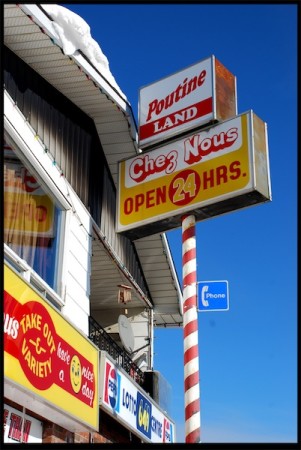
Yes, this is for real. Chez Nous / Poutineland is a variety store that sells poutine 24-hours a day. Timmins is awesome. (Credit: Harriet Carlson)
Yes, I can confirm it, Timmins, Ontario definitely has the most bars per capita of anywhere in this country
I was going to write about the bars, like The Maple Leaf, which was torn down in 2009, 30-plus years after it gave Stompin’ Tom got his start.
But what’s more memorable is hearing from some of the old timers about when Stompin’ Tom sang about the area in the mid-sixties – most notably about the Hollinger Mine Fire – he outsold even The Beatles in Timmins and the area.
I was going to talk about becoming too-well acquainted with the Franco-Ontarian centre, both through breakfasts upstairs at La Chaumière and downstairs in the basement bar.
Really, though, the memory that sticks out is the night I become inextricably embroiled in a local festering controversies. Did I take my poutine at Chez-Nous or Chez-Vous? Chez-Nous, hands down. The Victory or Albert’s? Neither. Was I a Toffanello’s person or a Colasacco’s person? Colasacco’s – almost as good as my own Nonna makes it. (I’m sure the wings at The Moneta and Mrs. Colasacco’s home-made gnocchi accounted for most of the 20-plus pounds I gained in Timmins.)
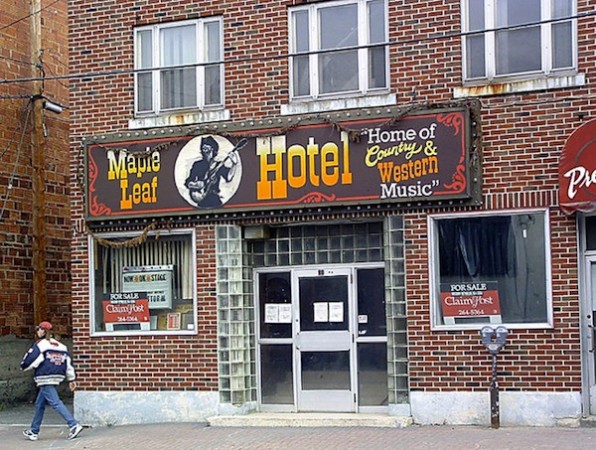
Not just home to Stompin’ Tom, but a young Shania too. (Credit: Timminspress.com)
I wanted to wax on about my Friday afternoon lunches at the The Moneta, with its crispy wings and beer mugs fresh from the freezer every time you ordered a draft.
But what’s more meaningful is the afternoon in early August that my table was approached by a stranger.
“You”, he pointed, picking me out from the two other guys I was eating with. “If you’re from around here you’re here too much. If you’re not, let me tell you about this place.”
That’s when he told me about how The Moneta used to be a highgrading tavern, the place where miners used to sell the contraband gold they smuggled from their shifts underground. And about how highgrading could be a ticket to a better life, or, if you happened to be in the bar at the wrong time, it was a ticket to jail, a beating, or worse. It’s still an apt metaphor for northern life.
Three weeks later, after finishing my last Friday afternoon lunch, I found there was no bill to be paid. And not just for me, but for my friends too.
I don’t know who covered it, but I have a hunch.
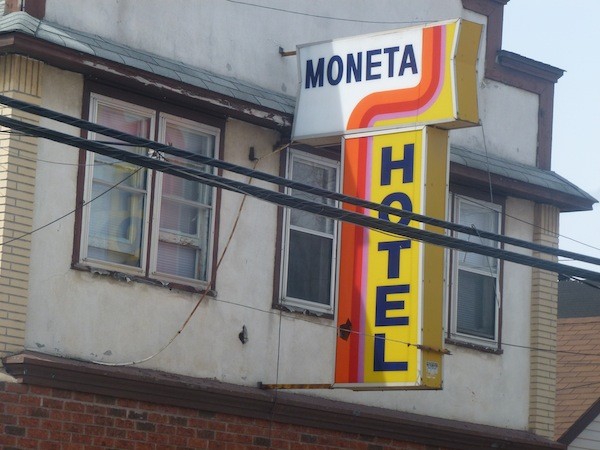
The Moneta Hotel in Timmins, Ontario. Awesome wings, ice cold beer in frosted mugs. Doesn’t get any better. (Credit: highgradermagazine.com)
Timmins: It’s really about the people
Sometimes extremes share unique similarities. One of those is this independent streak that often runs through the Ontarian psyche – regardless of whether you’re urban, suburban or rural.
Urbanites often become emboldened by anonymity in the face of life surrounded by so many people. The suburbs let you become sheltered by through an independence in which interaction with others is relatively optional. The independence of space and relative isolation of rural life can lead people to live relatively solitary lives.
It’s understandable that these conditions, over time, can lead you to believe in your own self-reliance.
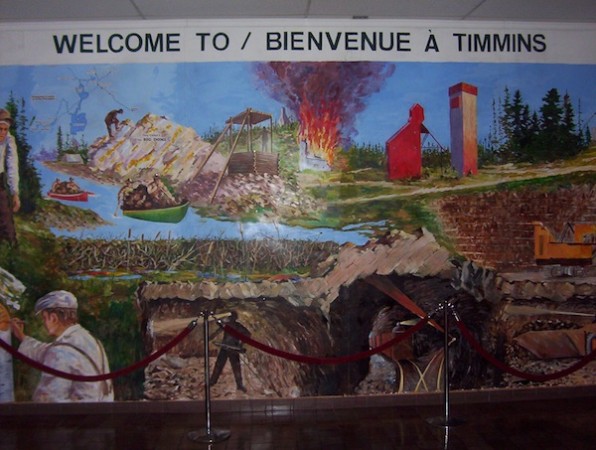
Welcome to Timmins, Ontario! I have never ever had a greasier meal than the breakfasts I took at the Timmins airport, though a lot of local restaurants sure gave the airport a run for their money.
But Timmins in different.
It is in the way that Timmins celebrates its sons and daughters. Everyone I ever talked to didn’t begrudge Shania Twain for not visiting regularly. Instead they were proud of the fact that someone from their hometown did so well for themselves that they could afford to live in a Swiss castle.
This is a town where the houses empty in early December for the Timmins Santa Claus parade. A relatively modest celebration by most standards, in Timmins the parade regularly draws almost a quarter of the community to its streets.
I thought I would be lonely and bored. But I couldn’t get people to leave me alone in Timmins. I was invited on fishing trips. I was taken on family trips to Cochrane to see the Polar Bears, to Cobalt to see the old mines, to Kamiskotia to hang out at their cottages, to Fred’s Northern Picnic where I saw Serena Ryder play to an audience of 60 people, long before she shot to prominence. And there is the bowling. I don’t know what it is with people from Timmins but geez they love their bowling.
Night after night, weekend after weekend, I was invited into their homes – not just for food, or a warm bed, but to be part of their daily routine. To play with their kids. To look at their photo albums. To drink Green Candy Apple liqueur while watching Columbo. To “help” them work on their snowblower or lawnmower or xmas lights or ice fishing shed. Or to just listen to classic rock, drink beer, and …well…I’ve already talked about it in the South Porcupine blog post.
That’s how it is. Because you can’t get by on your own in a place like this.
And in a way, that sentence sums it up best.
I’m not sure why Timmins had such an effect on me.
Maybe it’s just because I was there during an impressionable and interesting stage of my life. Or maybe it’s because I’m getting old and falling prey to nostalgia.
Or maybe it is because Timmins is oddly reflective of both the Ontario we used to be, as well as the Ontario we could become.
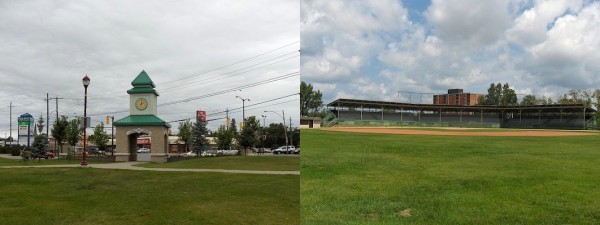
Hollinger Park in Timmins, Ontario
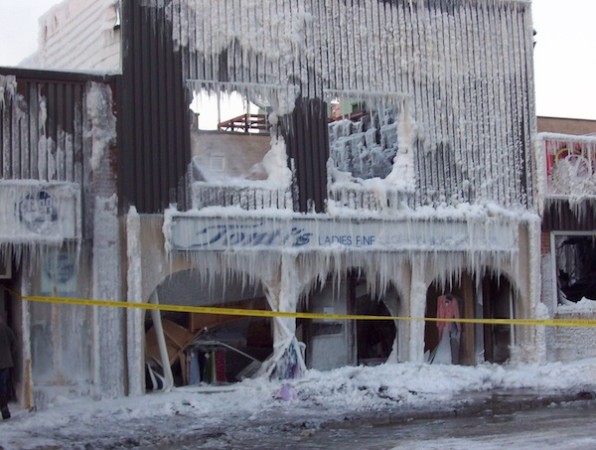
Winter fire on the main drag in Timmins, Ontario
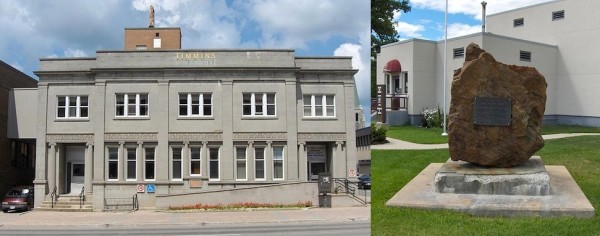
Timmins City Hall (left) and Timmins Chamber of Commerce (right)
